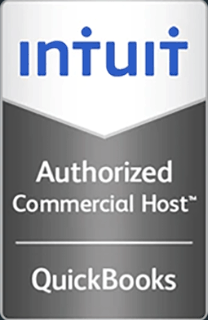The State Of Cloud Confusion: Who’s Your Cloud Built For?
Adam Stern | Forbes Technology Council
Today’s question: How does a business get into the cloud?
It’s not a trick question. It’s actually a freighted question with any number of nuanced answers — and, appearances aside, not every business is already cloud-aware or cloud-bound.
Let’s assume you’re a small or midsize business poised to make the move and that you’re working with a clean slate, even at this late date. Do you dial up a managed service provider that’s moonlighting? Track down an IT consultant linked to Microsoft Azure or Amazon Web Services? Go directly into the big provider maw? Keep it boutique?
There’s no immediate wrong answer here, which can be both reassuring and vexing. With the cloud’s ubiquity, identifying your path has become harder, not easier, with the passage of time. I’ve seen this tale told by consultants, full of static and noise, and frequently not signifying anything definitive. Given that the temptation is to do what’s convenient, not what’s smart, perhaps that opening question should be rephrased as: What’s the state of confusion today?
That’s an important query because confusion and uncertainty tend to favor “safe” choices, and increasingly, today’s default choice is likely to be a big gun, a commodity provider. By way of analogy, consider Dell computers. When Dell broke through in the PC business in the 1980s, the company helped usher in the term “mass customization,” which only seemed like an oxymoron. With apologies to Burger King, Dell shoppers pretty much could have it their way. And whatever the veracity of the pitch, it worked. A market leader was born.
The premise behind Dell’s approach to mass customization, as in Ford’s and Nike’s and so many other industrial producers over the last several decades, is that offering (and, from the consumer’s point of view, acquiring) a commodity is a good thing. “Commodities with benefits” would appear to work out for all concerned, delivering a tailored mix of predictability and affordability.
Cloud computing isn’t exempt from this phenomenon; indeed, it’s enjoying something of a heyday. The big, publicly traded cloud providers now dominate the market. But is the commodity model truly working for the business rank-and-file? How well, and for whom, is that model actually functioning?
From my experience, the premise under which commodity cloud players operate is that all clouds are equal. They maintain that the value-add that anyone else offers is negligible — it’s clearly in their interest to make that claim — and a growing clutch of providers now subscribe to an “if you can’t beat ‘em, join ‘em” mentality.
I believe that’s a potentially profound loss to the user community, since product/service differentiation absolutely does exist and must continue to exist. Under this new scenario, providers win either way, but as in any quasi-monopoly environment, the elimination of choice slams users. A homogenized industry primarily serves itself, not the customers who nurtured the industry in the first place.
But back to the questions. Today’s savvy business owner needs to ask: Is your cloud provider trying to solve a business problem or sell the cloud? Is your cloud built for you — or is it built for everyone else?
Here’s how to determine the answer: Find a vendor who has thought through your business problems and solved them for you before you even show up. In four crucial areas, I believe there are ways to separate the opportunists from those who regard a relationship with your organization as valuable and potentially enduring:
• Onboarding: Will you be paying a service or other third party to get things rolling, or is onboarding included as part of the provider’s suite of services? Strapping in isn’t a trivial matter; it entails moving applications, transferring data, helping users log in, etc. Are you left to your own devices or does someone have your back?
• Security: Have you had a conversation with the provider about what it will take to make your system secure? Did that conversation address firewalls, security policies and procedures, multifactor authentication, intrusion detection and prevention software, and the like?
• Backups: In the cloud, backing up is like breathing; everyone needs it. Is backup baked in, or does your vendor suggest you shop around?
• Support: To what degree is technical support part of the package? Is support truly end-to-end on all applications — which is what virtually every business needs — or is the support blanket porous?
The common denominator in each of these use cases is DIY. I believe that a provider who expects you, as the customer, to do the heavy lifting is a provider who doesn’t deserve your business. Commodity providers may look to the customer to reinvent the wheel — to configure, source and pay for any number of critical tasks — and it’s an untenable multiplication of effort nearly a decade into the cloud computing era.
Not having to start from scratch is avoidable, but only if the customer has the wherewithal to understand on day one that not all clouds are created equal.
Read in Forbes





